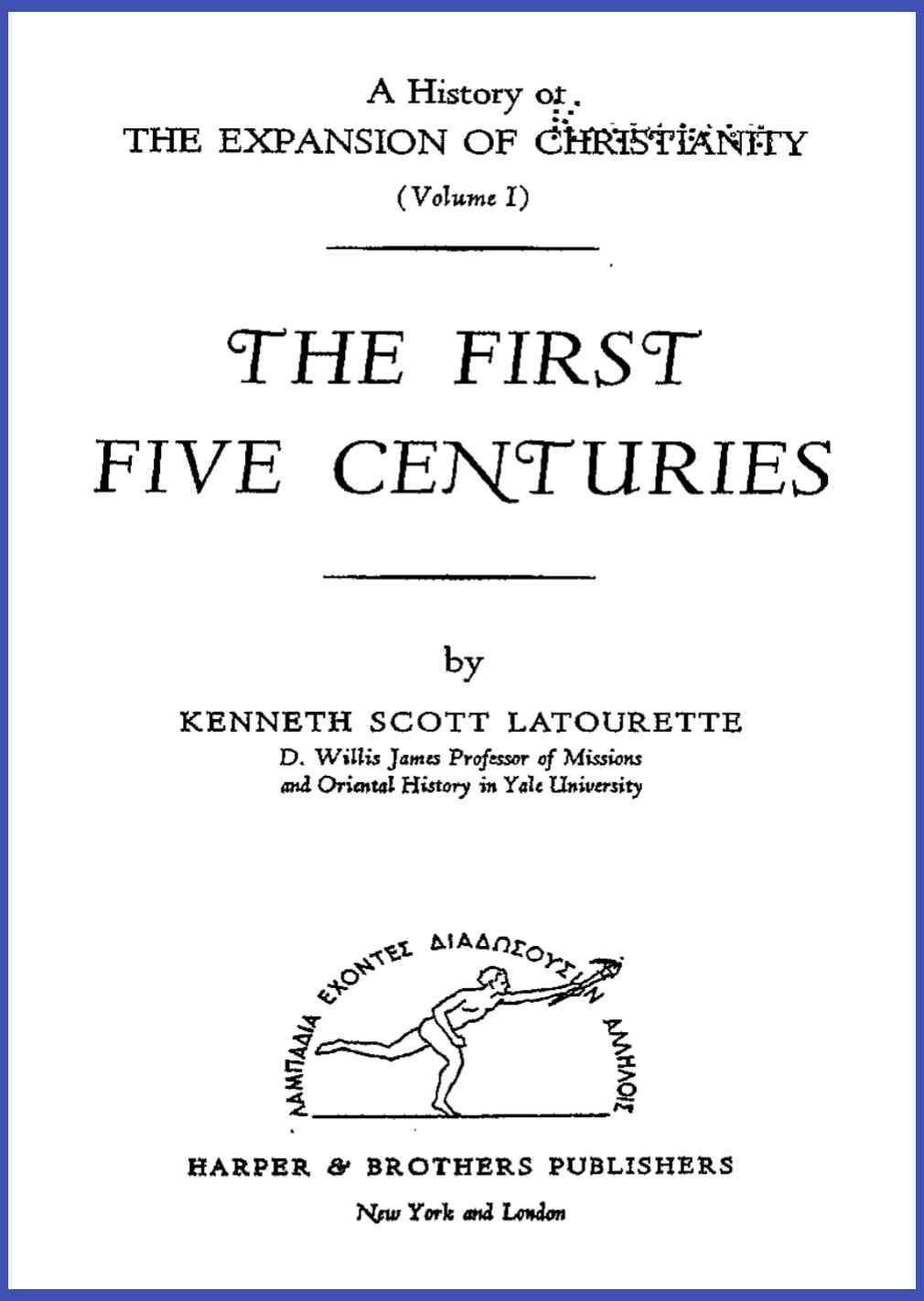Christianity
Christianity is the world's largest region representing about one third of global population. The religion is based on the life and teaching of Jesus of Nazareth. Christian doctrines include the beliefs that Jesus was conceived by the Holy Spirit, was born of a virgin named Mary, performed miracles, founded the Christian Church, died by crucifixion as a sacrifice to achieve atonement for sin, rose from the dead, and ascended into Heaven, from where he will return.
The following is an extremely brief history of Christianity. Books are provided at the bottom and readers are invited to read them to gain additional knowledge of the history.
Soon after the death of Jesus, his disciples traveled to different parts of the Mediterranean regions to spread the Gospels. Initially only Jews belonged to the church. Then Paul the Apostle started his mission among non-Jews (Gentiles). Because of this inclusion of Gentiles, early Christianity changed its character and gradually grew apart from Judaism and Jewish Christianity during the first two centuries CE.
As membership of the church increased, Christians faced the persecuting power of the Roman Empire. However, Roman Emperor Constantine I claimed to catch a vision of Christ and converted to Christianity. He issued an edict of toleration in 313 CE, which formally legalized Christianity in the Roman Empire. He also called the Council of Nicaea in 325 CE, which led to the first agreed upon Christian doctrine. As a result, Christianity became the most popular religion in the Roman Empire by the end of the 4th century. In fact, Christianity became the state church of the Roman Empire with the Edict of Thessalonica in 380 CE, when Emperor Theodosius I made it the Empire's official religion.
Below is a 13th century CE drawing of Pope Sylvester I and Emperor Constantine:
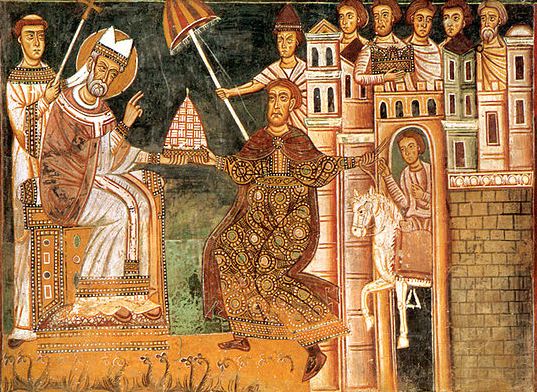
The Roman Catholic Church developed out of early Christianity and established itself as the main religion in Europe and sections of the Middle East throughout the Middle Ages. At the same time, the religion of Islam emerged in the Middle East at the beginning of the 7th century. Islam’s emergence is important for Christianity because the societies that embraced both religions would engage in conflict over the course of hundreds of years. Between 1095-1291 CE the European Christians were involved in a series of military campaigns called the Crusades trying to recapture the land around the ancient Canaan areas, which were held by the Islamic caliphates at that time.
Below is a 15th century CE drawing of the 1204 Crusade:
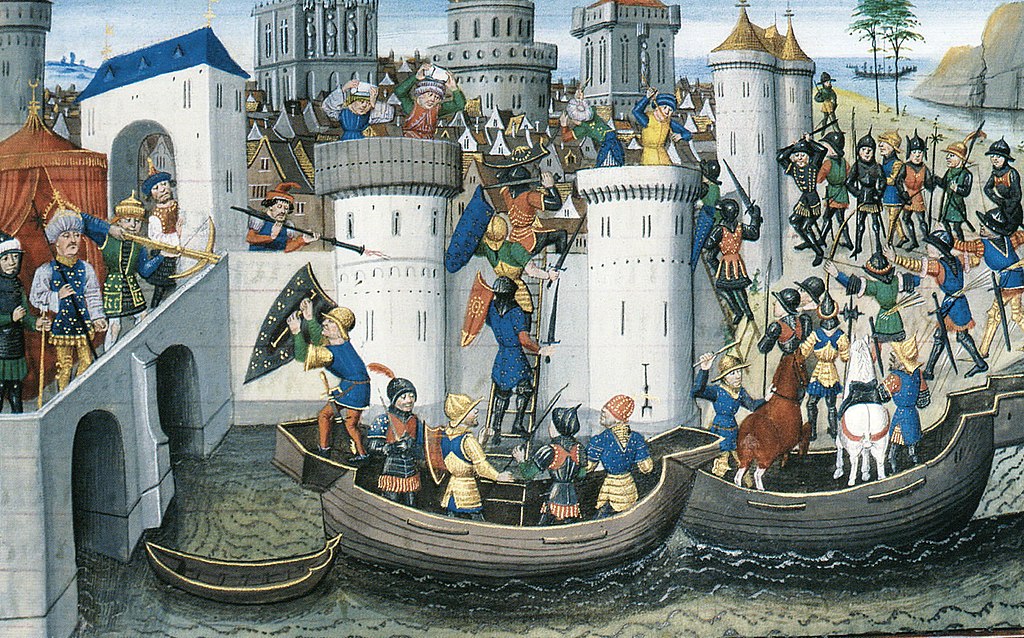
The Renaissance in Europe began in the 14th century and it had a profound impact on Christianity at the time. A major feature of the Renaissance was the introduction of Renaissance Humanism. In general, Renaissance Humanism was the study of ancient Greek and Roman texts with the goal of promoting new norms and values in society. These norms and views varied from those at the time because they focused less heavily on a religious worldview. Instead, Renaissance humanists used ancient texts to promote a worldview based on logic and reason. This was a major challenge to the Catholic Church and ultimately led to the Protestant Reformation.
The Protest Reformation began at the start of the 16th century. Historians consider it had started with Martin Luther. Martin Luther (who lived from 1483 to 1546) was a German professor and monk. In his work "Ninety-five Theses," published in 1517, Luther challenged several different teachings and practices of the Catholic Church. For instance, he argued against the notion that salvation was gained through good deeds and instead suggested that it could be attained simply through belief in Jesus Christ. He also argued that the scriptures themselves were the only true form of teachings and any other directives from the Catholic Church were not necessarily in line with Christianity. Furthermore, he translated the Bible into his native language of German which allowed many more people to access it and understand it for themselves. These ideas resonated with many Europeans as their worldview had been altered due to the development of humanism and the overall Renaissance. This started a chain of events known as the Protest Reformation. Eventually, the church was split.
Below is a statute of Martin Luther outside St. Mary's Church in Berlin:

Although all Christians believe in the same basic doctrines, as time went by there were disputes over fine details. As a result the religion was split into branches. Below is a diagram showing the divisions and the years divisions occurred.

The first division occurred in year 431. A council of Christian bishops convened in CE 431 by the Roman Emperor Theodosius II in the city of Ephesus. The council condemned the teachings of Nestorius, Patriarch of Constantinople. One of the teachings of Nestorius was that Mary is the Christotokos (bearer of Christ) and rejected the title Theotokos ("God-bearer") for Mary. The churches that supported Nestorius then severed from the rest of Chritendom and became known as Nestorian Christianity, or the Church of the East (also called today as the Assyrian Church of the East). This division is shown as the yellow line in the above diagram.
The second division occurred in year 451. Another council was convoked by the Roman Emperor Marcian in the city of Chalcedon. There was a dispute over the nature of Christ: whether Christ is fully divine and fully human in one "nature," or "two natures," i.e., a divine nature and a human nature. The Oriental Orthodox believed in one nature while others believed in two natures. This division is shown as the purple line in the above diagram.
The third division occurred in 1054 and the church was broken into the Catholic and Eastern Orthodox churches.This break was the culmination of theological and political differences that had developed over the past few centuries. This division is shown as the red and blue lines in the above diagram.
Starting from the 15th century there were efforts to unite the branches. Some of the members of these branches formed the Catholic church of Eastern rites. They are called the Eastern Catholic Church. In this union they accepted the Catholic faith and recognized the pope of Rome as supreme earthly head of the church. They retained, however, all other characteristics—e.g., liturgy, spirituality, sacred art, and especially organization—proper to themselves. This is shown as another red line in the above diagram.
In the 16th century there was a reformation movement in the Catholic church arising from what were perceived to be errors, abuses and discrepancies by the Catholic church. The movement split the Catholic church into Protestants and what is now the Roman Catholic church. The Protestant branches are shown as lines above the red lines in the diagram.
Protestants and Roman Catholic are well known by most people in the world. Thus, we will not discuss them in this site. Instead, we use the links above to provide more information on the other lesser-known branches.
For more details of the history of Christianity, please read the books below. These books were written at different time periods, thus can give us a better perspective of the history.
A book on early Christians, written by Niko Huttunen, who is a Docent and Faculty of Theology of the University of Helsinki.
Early Christians Adapting to the Roman Empire
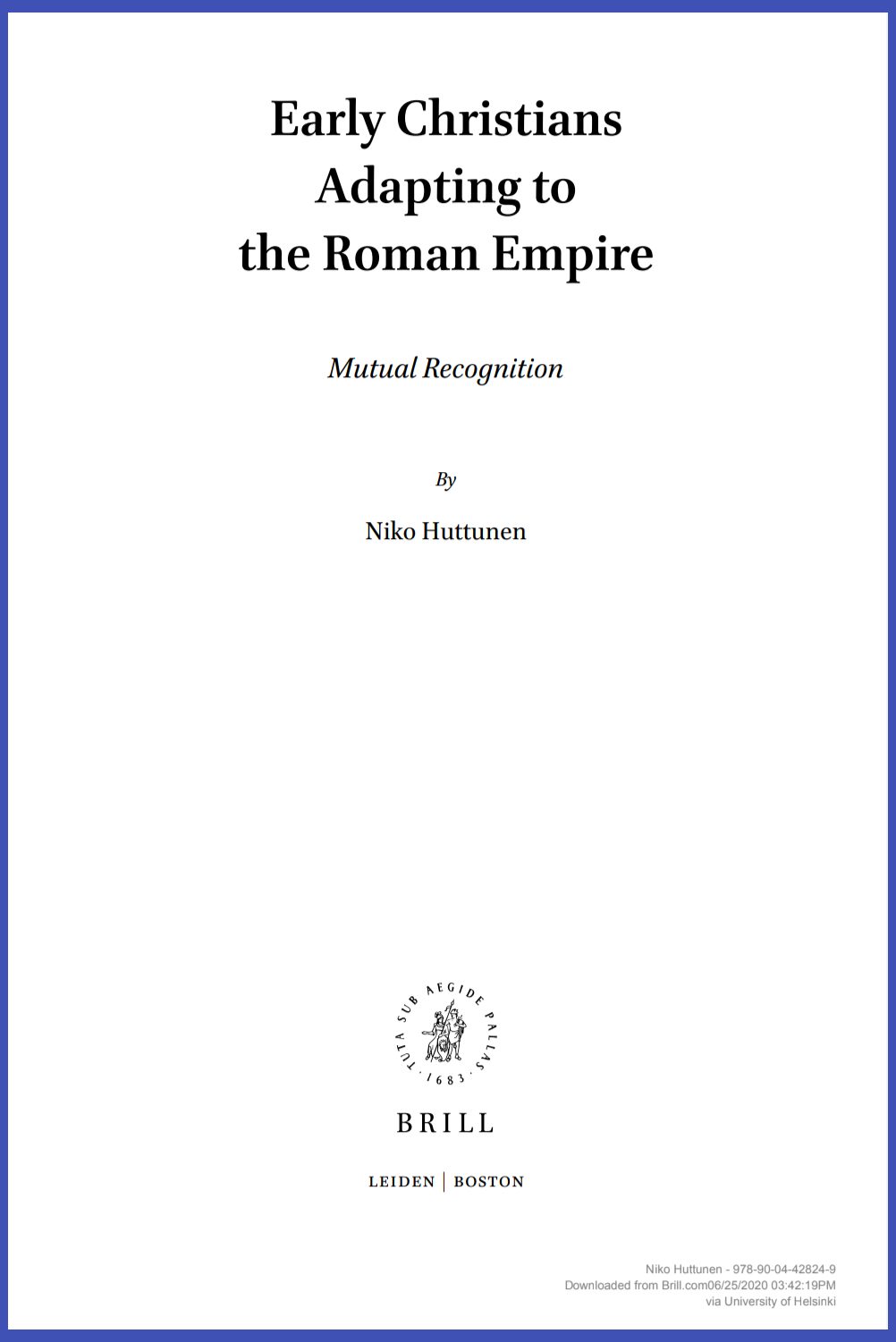
A book on early church history. It was written by Eusebius (262-339 CE). He was a scholar of the biblical canon and was regarded as one of the most learned Christians during late antiquity. The book was translated by Arthur Cushman McGiffert (1861-1933), an American theologian.
The Church History of Eusebius
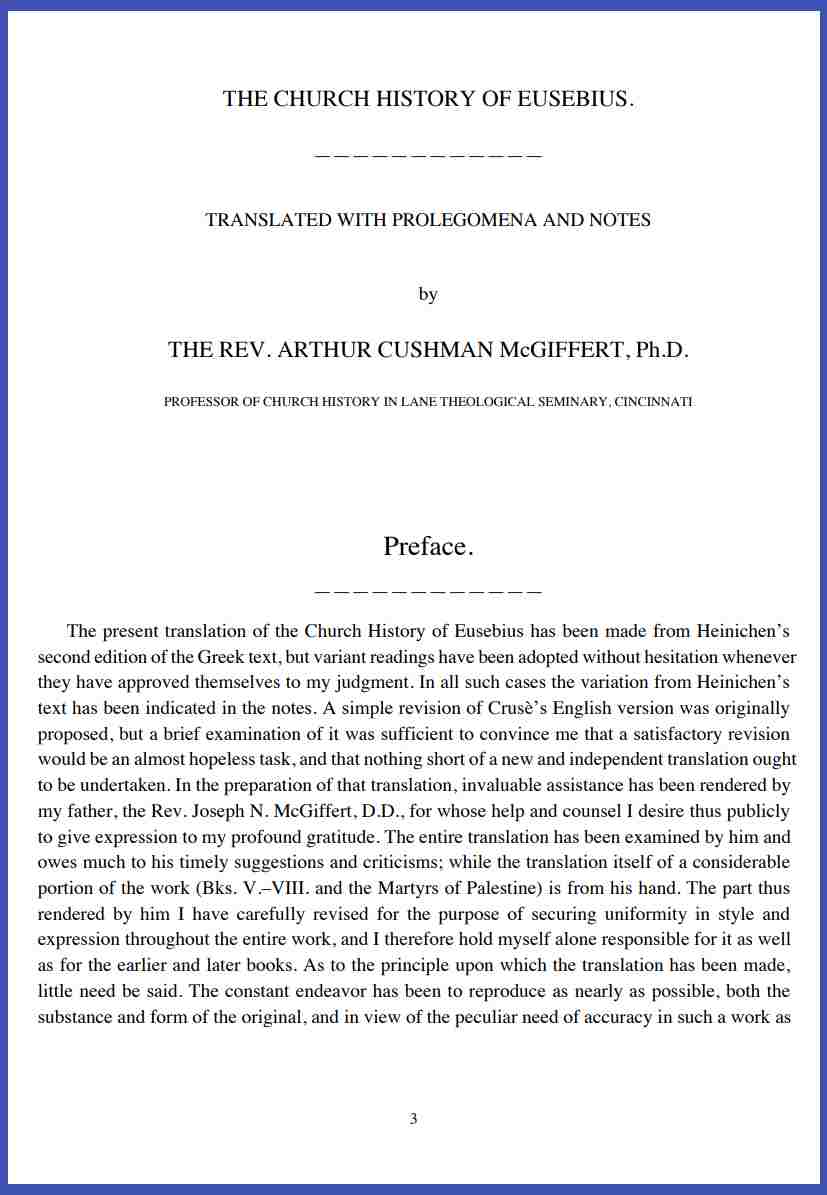
The book below, The Chronicle of Seert, was written in Arabic by an anonymous Nestorian writer between 9th to 11th century CE. The Chronicle deals with ecclesiastical, social, and political issues of the Persian Christian church giving a history of its leaders and notable members. It details the growth and prospering of the Church of the East despite alternating periods of persecution and toleration under the Zoroastrian rulers of Sassanid Persia. The work then celebrates the triumph of the Muslim conquerors in the 7th century as liberators from increasing Zoroastrian oppression. The book was translated by Philip Wood.
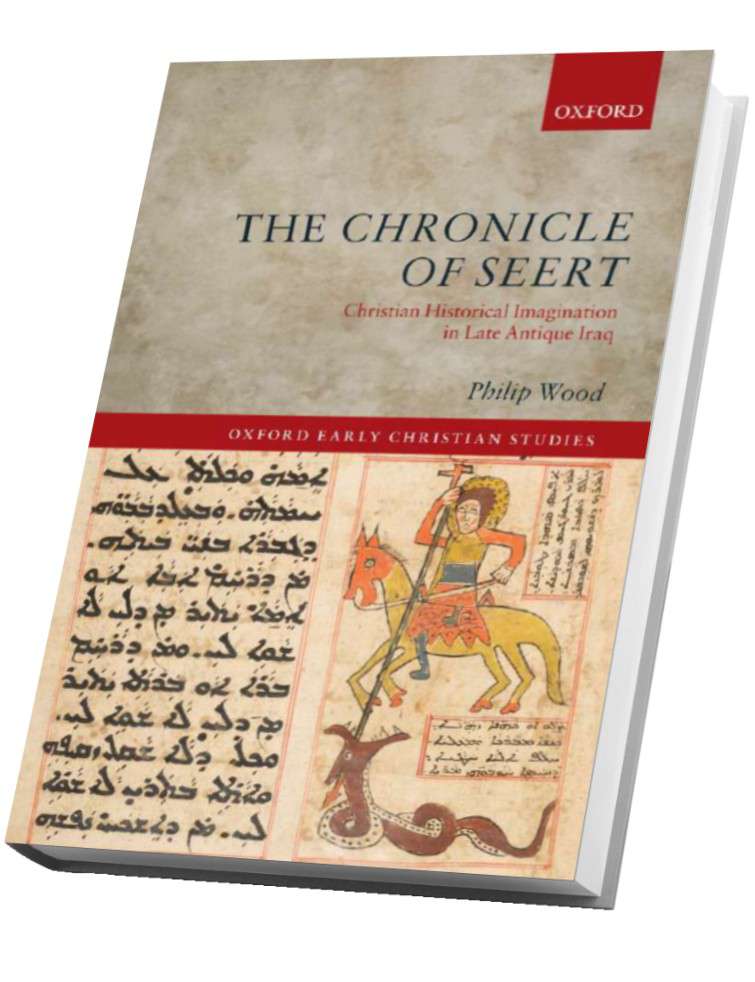
A book on the crusades by W. B. Stevenson. This is a description of the book: "First published in 1907, this book provides a history of the political relations between the states founded by Crusaders and the Islamic states with which they waged war. In the treatment of this subject the Eastern point of view is emphasized and the main thread of narrative is drawn, as far as possible, from the history of Islamic states. Additional material includes appendices relating to chronology, a list of principal works referred to in the notes, an index, and maps. This book will be of value to anyone with an interest in the history and historiography of the Crusades."
The Crusaders in the East: A Brief History of the Wars of Islam with the Latins in Syria during the Twelfth and Thirteenth Centuries (file size: about 12 MB)

A very interesting book on the Nestorian church (Church of the East) in China was written by P.Y. Saeki of Japan in 1913. According to the Preface by A.H. Sayce: "One of the most interesting of Professor Saeki's suggestions is that in the Chinese secret society called Chin-tan Chiao, we have the descendants of the Chinese Nestorians. He is also successful in pointing out that the "Protestant" Buddhism of Japan is to be ultimately traced to Christian tradition."
The Nestorian Monument in China (file size: about 14 MB)

The following book is a comprehensive history of Christianity. This series of books contain seven volumes. Only the first four volumes are provided here (covering history to 1914 CE). The author, Kenneth Scott Latourette (1884-1968), was an American historian of China, Japan, and world Christianity.
A History of the Expansion of Christianity (Vol. 1) (The first five centuries; file size: about 12 MB)
A History of the Expansion of Christianity (Vol. 2) (A.D. 500 to A.D.1500; file size: about 12 MB)
A History of the Expansion of Christianity (Vol. 3) (A.D. 1500-1800; file size: about 14 MB)
A History of the Expansion of Christianity (Vol. 4) (A.D. 1800-1914; file size: about 14 MB)
